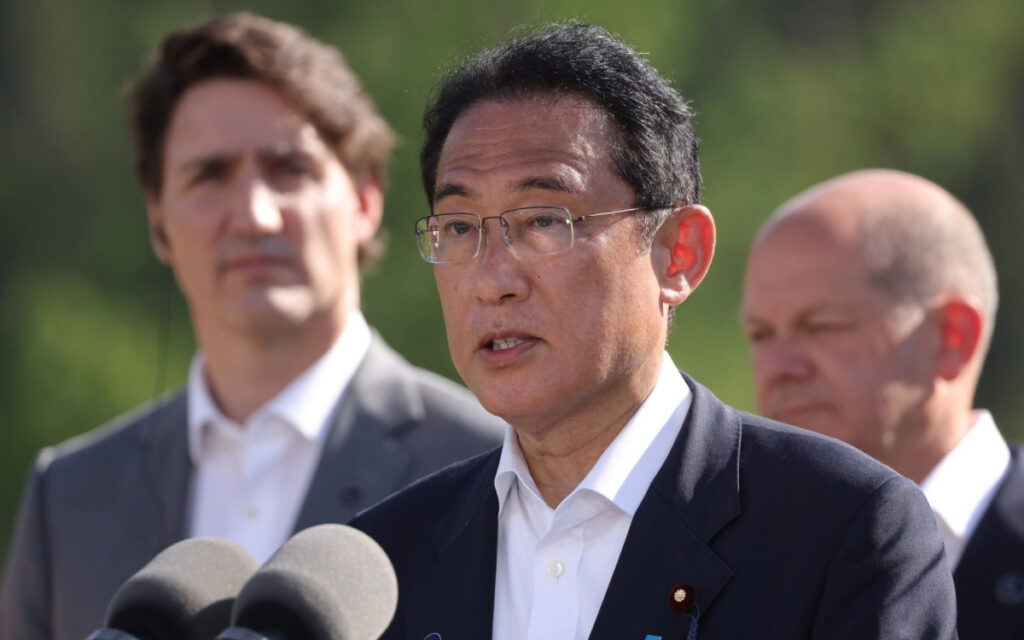
Prime Minister of Japan Fumio Kishida speaks during the G7 summit at Schloss Elmau, Germany on June 26, 2022 as (L-R) Canadian Prime Minister Justin Trudeau and German Chancellor Olaf Schulz look on. Getty Images photo
Canada’s proposed oil and gas emissions cap sends a conflicting message to allies in Asia, according to a prominent energy policy analyst.
The plan for the cap – widely seen as a cap on production – is being put together just as Canada nears its first large-scale access to Asia’s growing oil and gas demand, notes Heather Exner-Pirot, a senior fellow with the Macdonald-Laurier Institute.
“Our allies in Asia, particularly Japan and Korea, are waiting for the LNG and the oil,” says Exner-Pirot.
“Everyone knows we only ship to the United States. We haven’t had any real pipeline capacity to the east or to the west. Finally, we’re getting it and now we’re going to curtail production. It makes no sense.”
Oil and gas needs in the Asia Pacific region are expected to continue growing through 2030 and 2050, according to the International Energy Agency.
The recently completed Coastal GasLink pipeline is ready to supply natural gas to the LNG Canada export terminal, which is in the final stages of construction and targeted for startup next year.
Meanwhile the Trans Mountain pipeline expansion is weeks away from startup, nearly tripling Canada’s oil export capacity to customers by sea.
The federal plan to cap emissions in 2030 at up to 38 per cent below 2019 levels would require production cuts, according to the Business Council of Canada.
That could threaten world energy security by opening the door to Russia as a bigger supplier instead of Canada, Exner-Pirot says.
“We want to fill those pipelines and help Japan and Korea get off Russian supply and get off OPEC supply, frankly. We want them to have an option,” she says.
“We still haven’t been able to get off Russian oil and gas, and now we want to put in policies that will limit our ability to replace it. Our number one priority should be to replace it.”
Capping emissions from Canada’s oil and gas sector would come at great economic cost while having negligible impact on the environment, according to analysis by the Montreal Economic Institute (MEI).
“Each time Ottawa forces the Canadian energy sector to contract, it is foreign producers who win,” said MEI public policy analyst Gabriel Giguère.
“Ottawa does not have the means to affect global demand, so reducing local supply will only end up exporting jobs and tax revenues.”
MEI estimates the proposed cap would cost Canada’s economy upwards of $6 billion per year if fully implemented.
Exner-Pirot argues that through initiatives like the Pathways Alliance in the oil sands, Canada’s energy sector already has credible plans reduce emissions and achieve net zero.
“By forcing this abstract date of 2030, you’re making it far more difficult and more expensive, where it will [already] occur within a reasonable timeframe,” she said.
This article was first published by the Canadian Energy Centre.




















